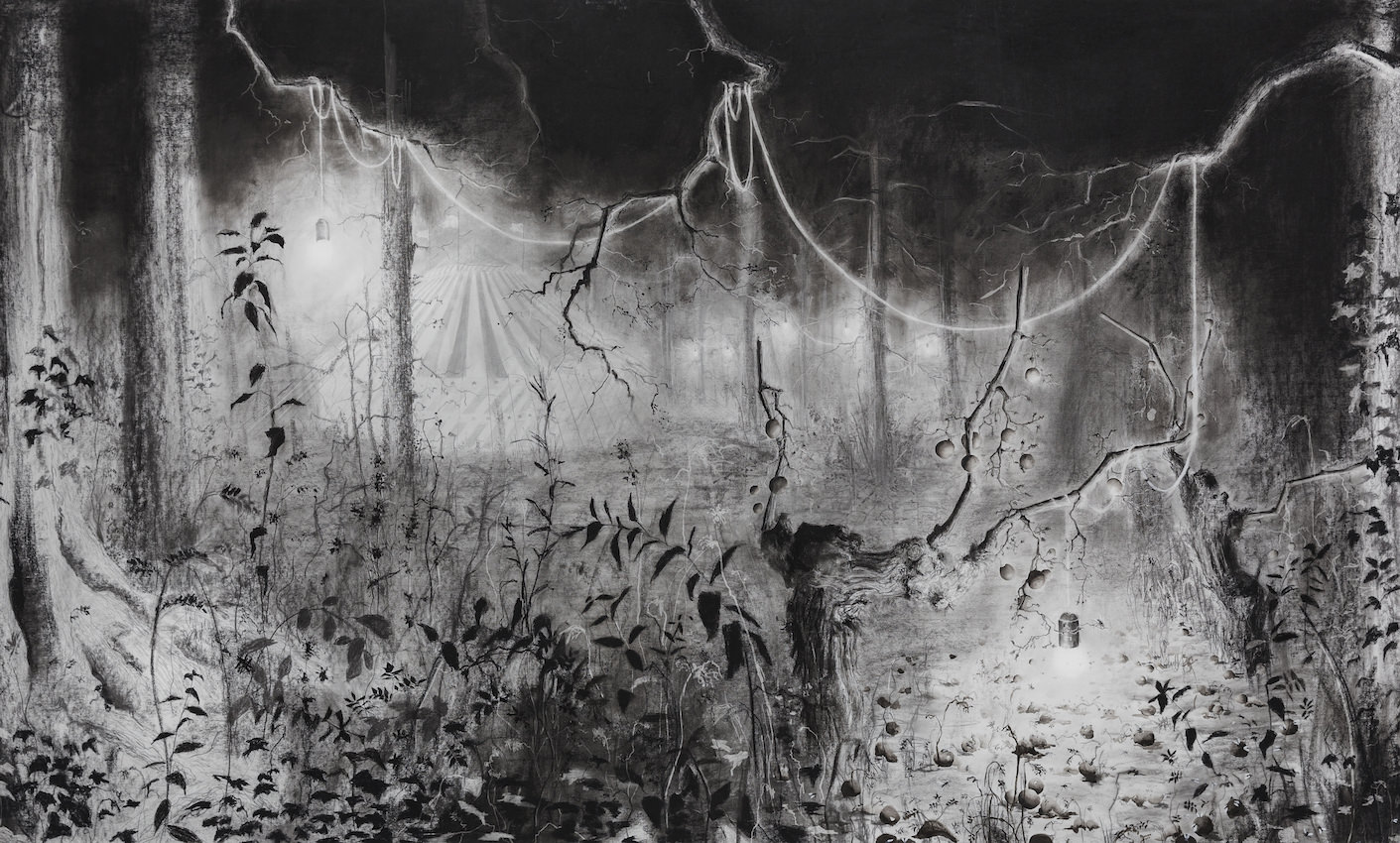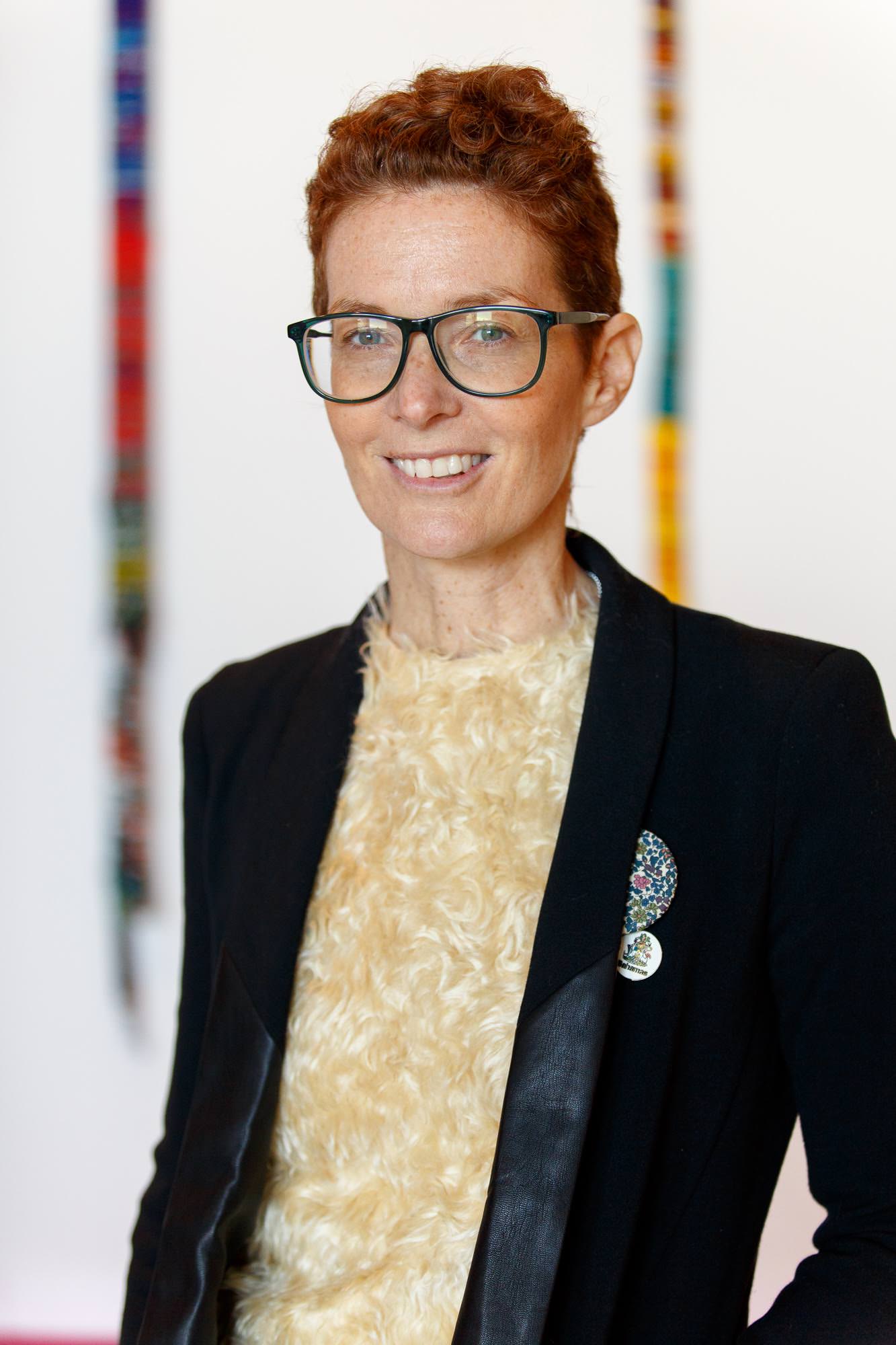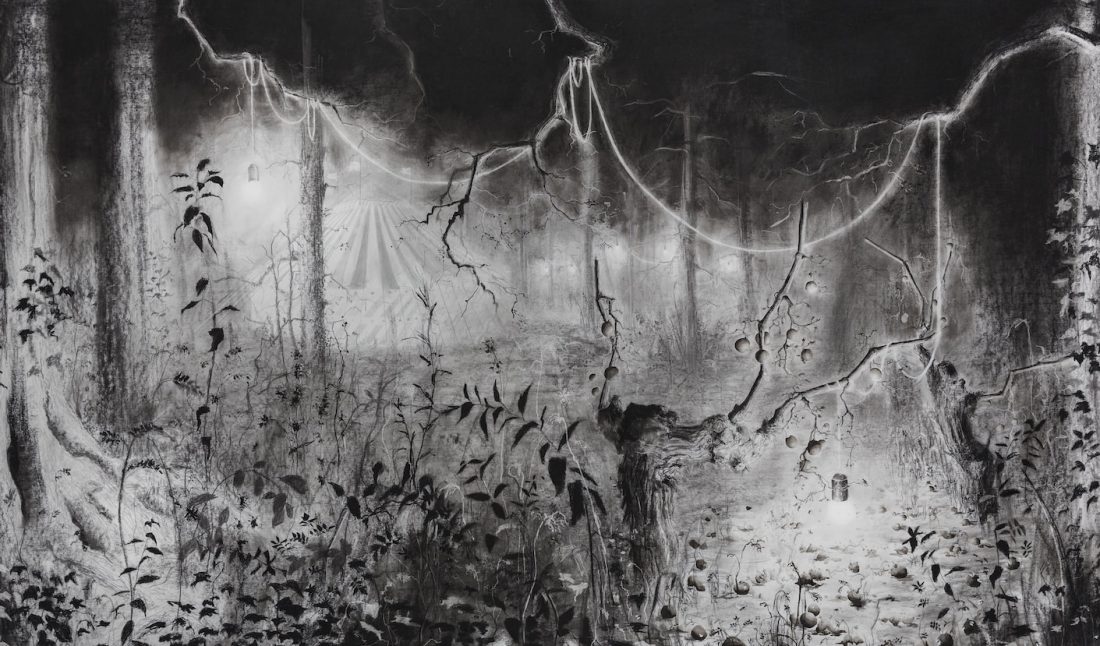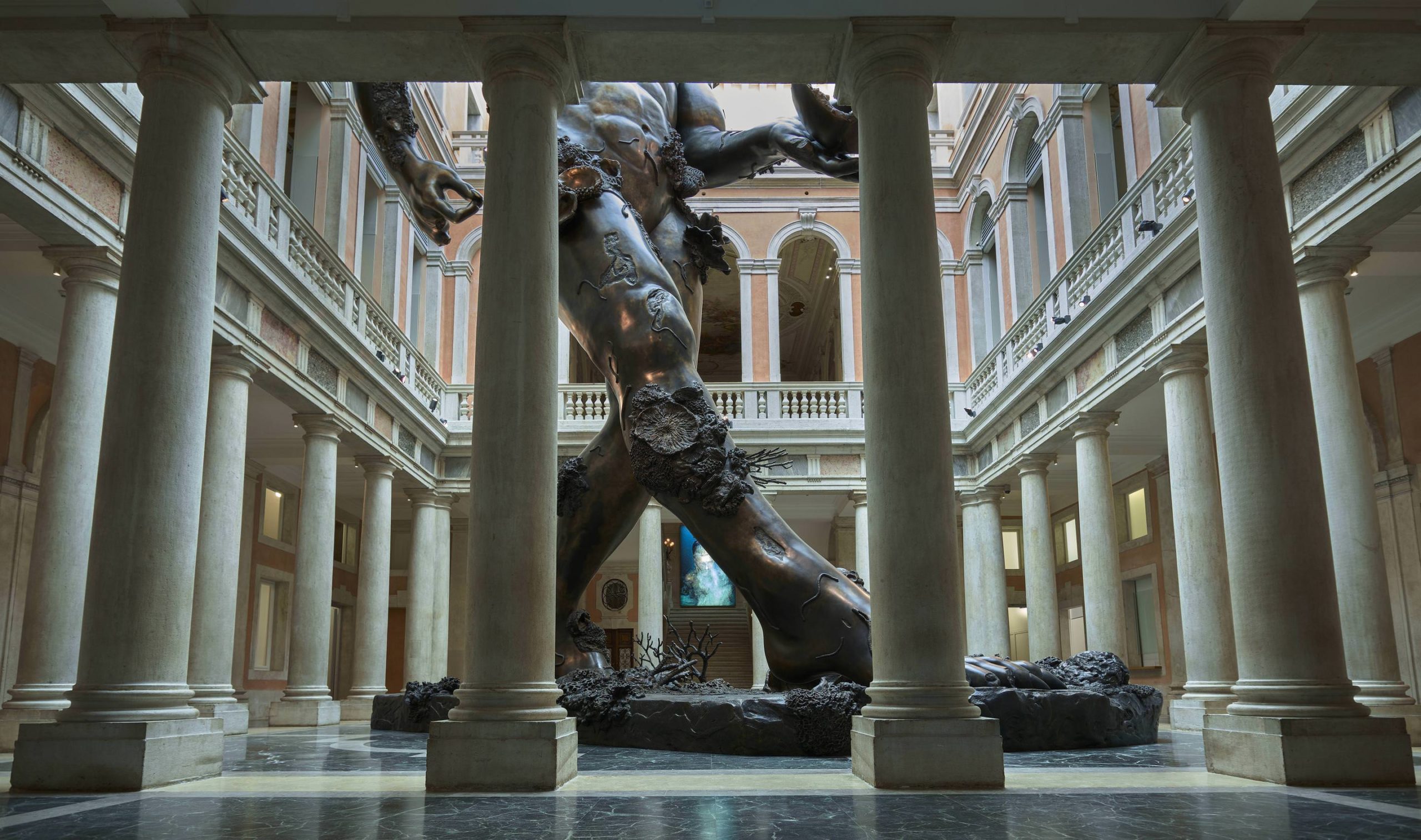VOLTA returns this year with 68 galleries from 20 countries and 33 cities (including places as far-flung as Osaka, Tbilisi, and Ljubljana). Before the opening of the 12th edition of the fair on June 13, we spoke with VOLTA’s director Amanda Coulson about the rise in solo presentations, the changing collector base, and forging a closer relationship to the city of Basel.
WHITEWALLER: We saw that many new galleries and curated solo booth are in participation. Are there any particular solo booths you’re especially excited to see?
 Christine Boillat, Silent Circus, 2014, charcoal, graphic, and ink on paper, 59 x 110 inches, courtesy of Studio Sandra Recio, Geneva.
Christine Boillat, Silent Circus, 2014, charcoal, graphic, and ink on paper, 59 x 110 inches, courtesy of Studio Sandra Recio, Geneva.
AMANDA COULSON: In fact, Basel applicants with solo proposals have risen with each subsequent successful [solo-project focused] New York edition, and this goes for first-time exhibitors and the “old guard” alike.
From the newcomers, I am very excited about Caroline Corbasson, a young French artist whose interdisciplinary, research-driven work focuses on exploring and expressing the cosmos and indescribable landscapes. She will present a new body of work at the fair, following her studies at LAM, the Laboratory of Astrophysics of Marseilles, and a residency this spring at Villa Boesch in Western France. Caroline is presented at VOLTA12 by Galerie l’inlassable, a Paris gallery with a dynamic young programme, who were recommended to us by another VOLTA gallery.
 Portrait by David Willams Photography, courtesy of VOLTA.
Portrait by David Willams Photography, courtesy of VOLTA.
WW: How would you describe the VOLTA Basel collector they will reach, versus the VOLTA NY collector?
AC: The fragmented art market has definitely split the audience, giving different characters to different sites and events. There used to be a very reliable annual “flock” movement: everybody — whether from Asia, South America, the U.S. or Europe — was in Madrid in February, then Cologne, Venice (in a biennale year), Basel, Paris, and New York. With the addition of Brussels, Hong Kong, London, Miami, etc. the character of each venue has changed and slanted. However, art market audiences have really grown. The “old school” collector base — Europe and the U.S. — has been exponentially expanded with emerging economies from many locations, whether the East or the Global South. We see many more Europeans in Basel — with a large increase from Eastern Europe and Russia — as well as collectors from Africa and Asia. The European market often feels a little different to the U.S.: the collectors are very passionate, educated and committed but slower to respond; they will take time to get to know and artist, educate themselves and come back to the gallery, whereas New York always feels faster. New York seems to be press-heavy, with a lot of journalists and independent curators, as well as other artists and their posses; Basel — a very small, wealthy town situated between some very rich pockets of old collectors — is very much about the collectors and the market.
WW: What can we expect from “Basel Nacht” at Markthalle?
AC: “Basel Nacht” was started last year as a way to embrace the local audience in a more meaningful way. Fairs sort of drop into these places and move along, and we are all so concerned with being “international” and making sure we get all those collectors who are jetting from one pace to another, but what about our imprint on the city and our relationships to it? We use local graphic designers for both our fairs and — having been in Basel for 12 years now — we have many colleagues we’d call friends, who might not be buying the $200,000 artwork (yet) but are young professionals who are interested sincerely in the arts. We wanted to expand our connection to them, forge relationships that would grow and leave behind a good memory with our local audience, underscoring that we are not there just to use the city and consume what they have to offer, but to bring something longer lasting into its very creative fabric.
WW: Aside from VOLTA Basel, what do you most look forward to around this week of fairs in Basel?
AC: In Basel aside from the fairs, I’m excited about Jan van der Ploeg’s solo exhibition at Kunsthaus Baselland is a standout — the venue is a 15-minute tram ride from Basel’s main SBB railway station, and taubert contemporary (Berlin) is exhibiting van der Ploeg, including one of his signature geometric abstraction wall paintings, at VOLTA12. Additionally, La Kunsthalle Mulhouse’s summer exhibition “Le Meilleur des mondes,” which features an interdisciplinary approach to solitude in a hyperconnected world via three post-Internet artists: Julie Beaufils, Elvire Bonduelle, and Chai Siris, the latter a regular collaborator to Thai experimental filmmaker Apichatpong Weerasethakul. In addition to La Kunsthalle’s regular vernissage on June 8, they host an evening vernissage for Art Basel Week guests on June 17, replete with a shuttle service to and from the venue. Museum Tinguely will show YBA sensation Michael Landy’s first retrospective outside the United Kingdom.











